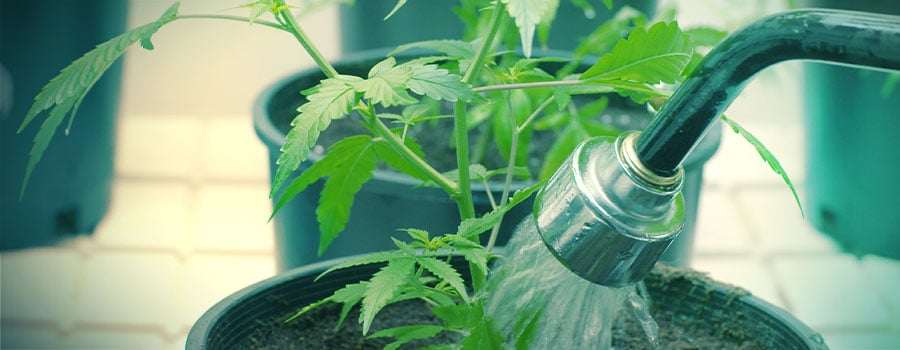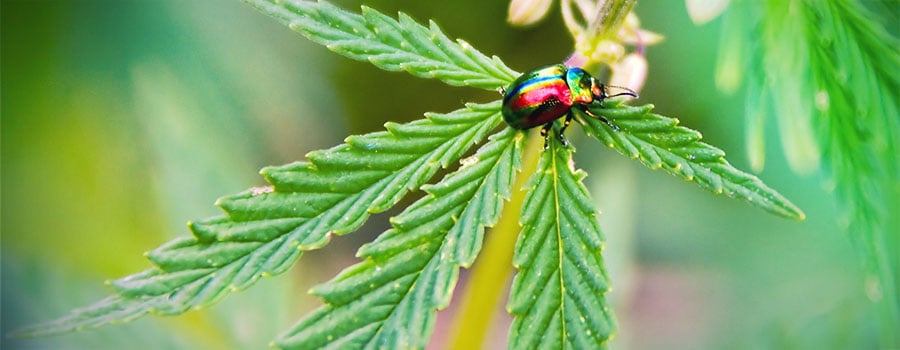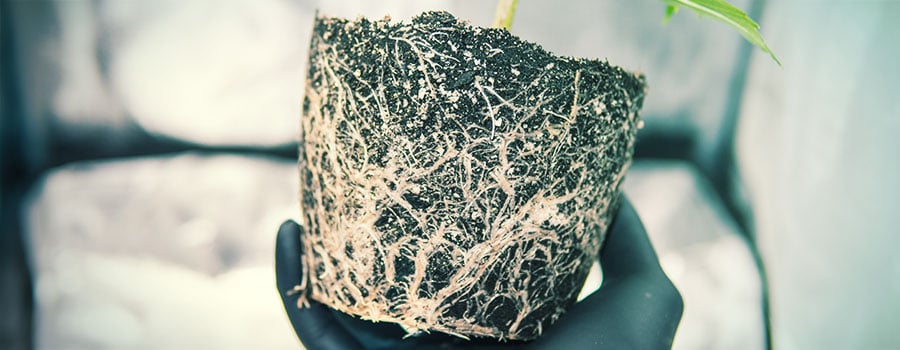
7 Common Causes Of Stress For Your Cannabis Plant
Occasional stress on your plants is no reason to panic. However, some types of stress can severely affect your plants’ health. Here are the 7 most common causes.
Not all stress that your plants can experience during growth is bad. In fact, growers are sometimes stressing cannabis plants on purpose since this can strengthen their resistances, accelerate growth and maximize yield. However, some types of plant stress, or if the stress on your plants exceeds what they can tolerate will have a detrimental effect. When your plants are stressed too much, this can stunt or halt their growth or in the worst cause them to die. Let us look at seven of the most common causes of stress for your cannabis plants.
1. WATER STRESS (OVERWATERING AND UNDERWATERING)
Growers know that too much and too frequent watering is bad but so is a constant lack of water. Overwatering or underwatering your plants can cause discoloured leaves and can make the leaves curl and wilt. When you overwater, you are choking the plant’s roots, which means your plants will have problems taking in nutrients and oxygen. Stress from overwatering is one of the most common causes for growing problems. Obviously, you also don’t want to have your plants die from a lack of water.
2. NUTRIENT STRESS (OVERFEEDING AND UNDERFEEDING)
Stress from either too much or not enough nutrients is another common problem that growers may run into. Your plants shouldn’t get more nutrients than what they can handle. In the same way as with too much nutrients, it is stressful when your plants don’t get enough or when the nutrient balance is wrong. Nutrient stress can bring on all sorts of plant problems that can range from discoloured and spotted leaves to stunted growth. Too much nutrients can also attract bugs and other pests.
3. PH LEVEL STRESS
To grow optimally, cannabis plants require an optimal pH level of their soil and/or nutrient solution. If the pH level is off, the plants cannot take in certain nutrients even if they are present. The wrong pH level of your soil or nutrient solution can lead to deficiencies and major growth problems. Stress from an incorrect pH level can also cause root burn and other problems.
4. LIGHT STRESS

Cannabis plants are sensitive when it comes to the correct amount of light as well as their light cycles. Plants that don’t receive sufficient light cannot grow to their full potential. Insufficient light during flowering is one reason for a poor harvest.
Consistency with your light cycles is also very important. Cannabis plants should receive 18 hours of light during their vegetative phase and be on a 12/12 light cycle during flowering. When the light cycles are not consistent every day, the plants get confused. It is very important that the cycles of darkness during the “lights off” phase in flowering are not interrupted. Even a small amount of light during the dark phase can trigger stress. It causes the plants to abort their flowering phase and re-enter their vegging phase. This will negatively affect their growth and your yield.
5. STRESS FROM TISSUE DAMAGE
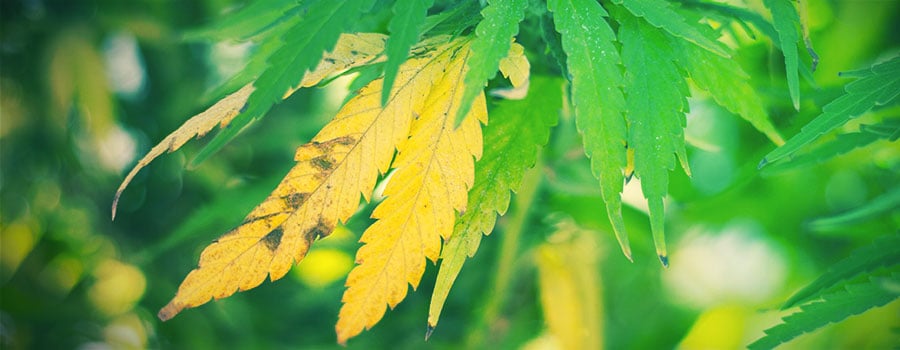
Minor damage to plant tissue such as your plants’ leaves or branches is normally no reason to panic. Plants are actually pretty good with handling such occurrences. In some cases, the occasional minor tissue damage can actually help strengthen your plant’s resistances. However, constantly experienced and major tissue damage stress can have a negative effect. Your plant would spend too much energy on repairing instead of growing.
6. ROOT STRESS AND DAMAGE
The roots are what plants use to uptake nutrients and oxygen which makes their health very important. Damage and stress to the roots caused by physical damage, extreme temperatures, bacteria, mold or light can severely affect your plants’ growth. As a rule, you should always watch for the root zone not getting much hotter or colder than room temperature. For outdoor growers, pots that get very hot from the sun and then burn the roots can be a particular concern. Mold and root rot are another problem that can affect the roots. This can happen when there is not enough oxygen at the root zone due to poor drainage.
7. ENVIRONMENTAL STRESS
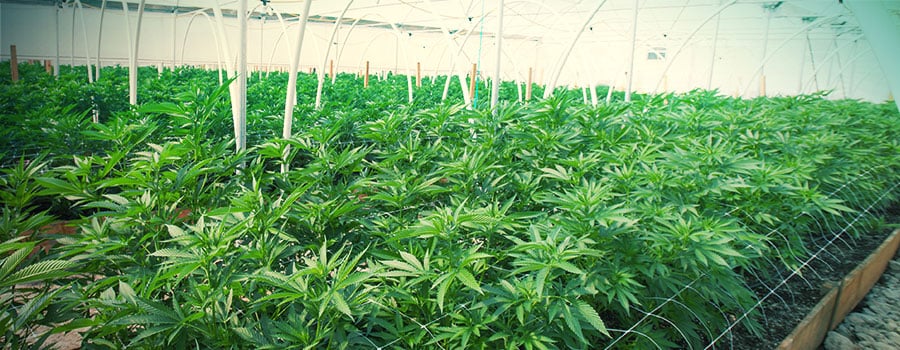
If you feel comfortable in your growing environment, chances are that your plants will too. Any extremes in the environment, like very hot or very cold temperatures or excessive humidity can cause stress to your plants with negative effects. You should always make sure that the temperature is at a comfortable level. You should also avoid sudden and extreme temperature changes. Proper air circulation is another environmental factor that you need to consider. This can help to avoid excessive humidity that would otherwise lead to mold and fungus growth.
Cannabis can be very hardy and is often easier to grow than what some might think. It is a weed, after all. The occasional stress on your plants shouldn’t be cause for concerns. Nevertheless, you should avoid major or consistent stress on your plants to ensure that your plants can grow optimally.
-
 4 min
12 August 2019
How To Spot And Prevent Bud Rot When Growing Cannabis
No one wants to have to deal with bud rot, but knowing the signs, and how to handle it can help save the vast majority of a plant.
4 min
12 August 2019
How To Spot And Prevent Bud Rot When Growing Cannabis
No one wants to have to deal with bud rot, but knowing the signs, and how to handle it can help save the vast majority of a plant.
-
 3 min
31 July 2019
How To Adjust pH Level When Growing Cannabis
In this article, we’ll teach you all you need to know about the importance of pH when growing cannabis, and how to change your pH levels if necessary.
3 min
31 July 2019
How To Adjust pH Level When Growing Cannabis
In this article, we’ll teach you all you need to know about the importance of pH when growing cannabis, and how to change your pH levels if necessary.
-
 3 min
29 November 2018
Simple Tips To Grow Better Weed
Every grower wants to get the most out of their cannabis, so here are a few basic tips and consideration that will help you develop technique and make your way to becoming a veteran.
3 min
29 November 2018
Simple Tips To Grow Better Weed
Every grower wants to get the most out of their cannabis, so here are a few basic tips and consideration that will help you develop technique and make your way to becoming a veteran.
-
 4 min
14 August 2018
How Much Water Do Cannabis Plants Need?
Just as with humans, cannabis plants need water to survive and thrive. But too much - or too little - and they die. Finding the right balance is crucial for an abundant harvest.
4 min
14 August 2018
How Much Water Do Cannabis Plants Need?
Just as with humans, cannabis plants need water to survive and thrive. But too much - or too little - and they die. Finding the right balance is crucial for an abundant harvest.














 United States
United States

